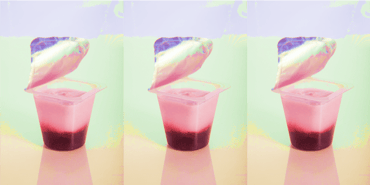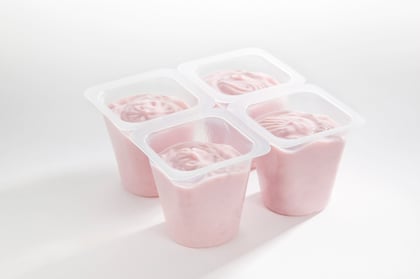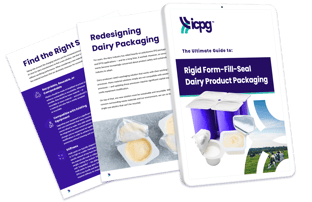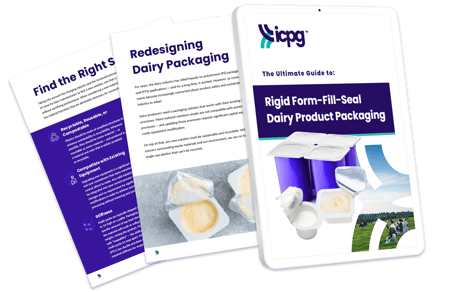 In recent years, increasing pressures to improve the sustainability and recyclability of food packaging, coupled with health & safety concerns, have resulted in development projects to replace PS in food packaging in a wide variety of end-use markets on a global scale - and dairy products packaging is no exception.
In recent years, increasing pressures to improve the sustainability and recyclability of food packaging, coupled with health & safety concerns, have resulted in development projects to replace PS in food packaging in a wide variety of end-use markets on a global scale - and dairy products packaging is no exception.
However, as a perishable food with a specific set of requirements for packaging performance and product protection, developing an alternative to a tried-and-tested packaging solution isn’t as simple as plugging in a new material. Specific characteristics must be maintained, from packaging function, to barrier performance, to Proposition 65 compliance – all in the form of a more sustainable and recyclable product – in order for a material solution to be considered viable for use in a form fill seal dairy products applications.
Continue reading to learn more about the key requirements for PS replacement in FFS dairy products applications to consider when evaluating alternative material solutions.
- Alternative material must deliver key material performance attributes:
Retail storage conditions such as temperature (refrigeration vs. shelf-stable) and light conditions, as well as the distribution environment, necessitate that the packaging material used for FFS dairy products packaging meets key material attributes to ensure that the product is protected throughout the duration of the shelf-life.
Key material attributes to consider when selecting alternative materials in FFS dairy applications include:
- Cold temperature impact properties for refrigerated applications
- Improvement to organoleptic properties (taste & odor) for an improved consumer experience
- Clarity and contact clarity to provide the consumer with visibility to the product
- Light degradation additives to protect the product from sensitive to UV and other forms of light wave degradation
- Compliance with Proposition 65 and other regulations regarding the use of PS in food packaging to satisfy consumer health & safety concerns.
- Alternative material must maintain packaging function & design features:
I n addition to maintaining specific performance attributes, the material must also meet specifications for packaging integrity and design function. Meeting or exceeding material specifications such as stiffness and strength, or barrier protection, are maintained when evaluating a new material is key to ensuring the integrity of the packaging, and ultimately the product protection and consumer experience.
n addition to maintaining specific performance attributes, the material must also meet specifications for packaging integrity and design function. Meeting or exceeding material specifications such as stiffness and strength, or barrier protection, are maintained when evaluating a new material is key to ensuring the integrity of the packaging, and ultimately the product protection and consumer experience.
Key functional attributes to consider when selecting alternative materials in FFS dairy applications include:
- Maintain snap-ablity required for multi-pack applications
- No compromise to current package performance, for example, column strength and crush
- Maintains current specifications for stiffness and strength to withstand various stages of the supply chain (transportation, retail storage conditions, etc.)
- Meets current OTR & MVTR barrier specifications for target shelf-life performance
- Ability to incorporate high-barrier materials where necessary
- Evaluate opportunities for enhanced barrier performance and improved shelf-life
- Alternative material must offer compatibility with processing & packaging infrastructure:
 Understanding the processing methods utilized for the packaging of dairy products directly correlates to material choice and target package performance in order to maximize efficiencies, product safety and ultimately provide a higher level of economic value. Development of alternative material structures must not only deliver on other key requirements in theory, but also in practice on existing packaging and processing equipment.
Understanding the processing methods utilized for the packaging of dairy products directly correlates to material choice and target package performance in order to maximize efficiencies, product safety and ultimately provide a higher level of economic value. Development of alternative material structures must not only deliver on other key requirements in theory, but also in practice on existing packaging and processing equipment.
Key processing attributes to consider when selecting alternative materials in FFS dairy applications include:
- Ensure successful formability of new material on existing equipment to maintain desired packaging function
- Minimal CAPEX investment to convert/modify existing equipment for successful processing
- Result in no compromise to current line efficiencies
- Alternative material presents no trimming issues or replacement of trimming stations on current FFS lines
- Achieve similar shrinkage to current material solutions to mitigate processing issues
- Improve yield on spend to increase efficiencies during forming and control cost
- Alternative material must offer improved sustainability and recyclability:
In today’s world, ensuring sustainable and recyclable packaging is no longer a ‘nice to have’ but a ‘need to have.’ Designing packaging solutions that promote an increased sustainability footprint and simplified recycling is essential to promoting circular economy practices with the ultimate goal of reduced waste.
Key sustainability attributes to consider when selecting alternative materials in FFS dairy applications include:
-
- Material structure has been designed for recycling through a polymer-specific recycling stream (i.e. RIC #5)
- Solution uses no mineral fillers or additives to maintain original density for sorting during recycling
- Alternative materials solution results in a simplified structure and does not require a complex mix of materials to achieve specifications
- Delivers down-stream sustainability advantages for an overall reduced carbon footprint
- Materials used present opportunities for incorporation of post-consumer recycled products
- Materials used have viable opportunities for re-use of recyclable materials into other applications (recycling in practice - not just in theory!)
- Design uses colors that do not compromise recycling potential & re-use opportunities
Today there are more choices than ever when considering dairy products packaging materials, and with increasing industry pressures on sustainability and concerns with Proposition 65, ICPG provides material replacement solutions for FFS dairy products using our XPP Enhanced Barrier Polypropylene solutions to check the box on all key requirements for PS replacement in FFS dairy products applications made easy.
Interested to see how XPP stacks up against alternative materials like PS and PET? Download the XPP Properties Comparison Cheat Sheet to see how XPP performs in comparison to other packaging solutions:





